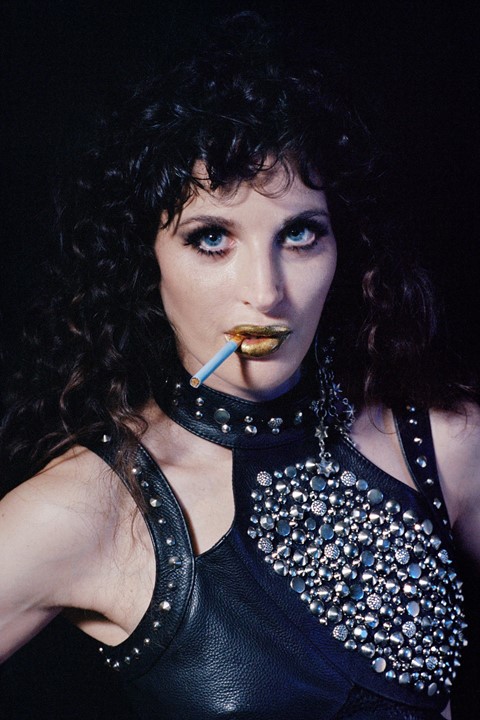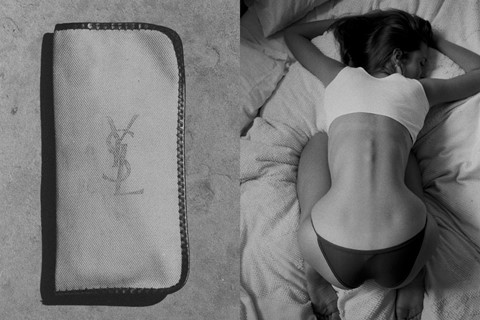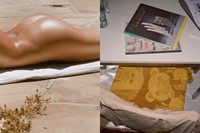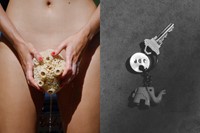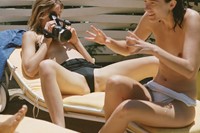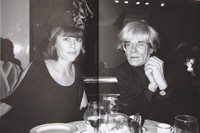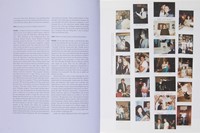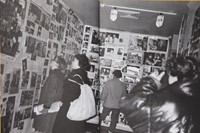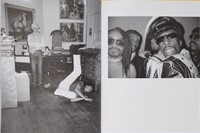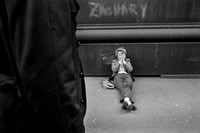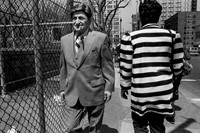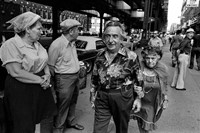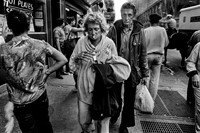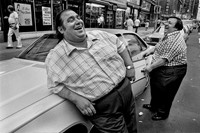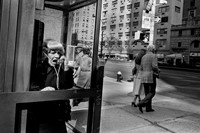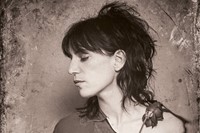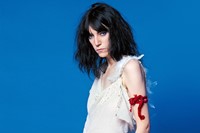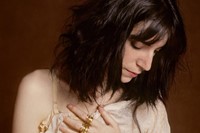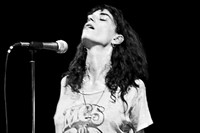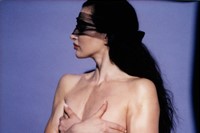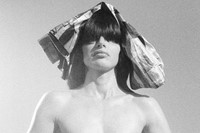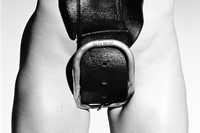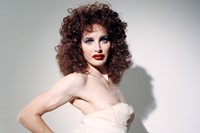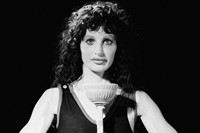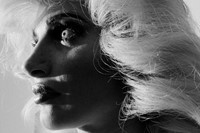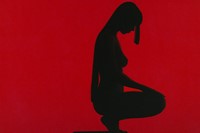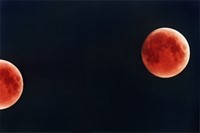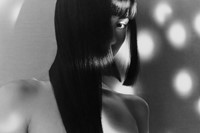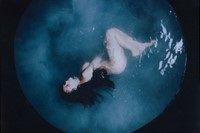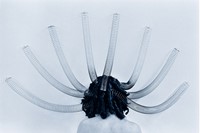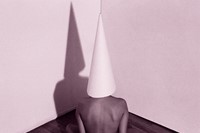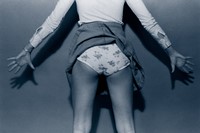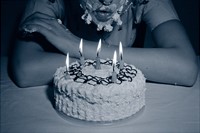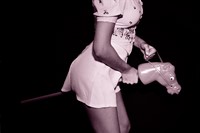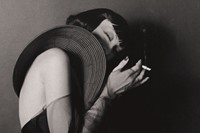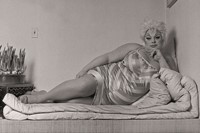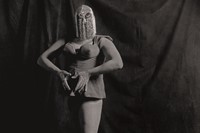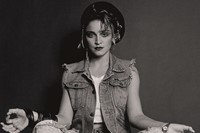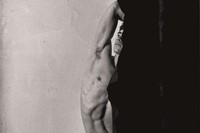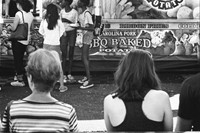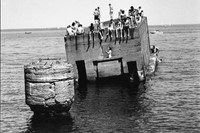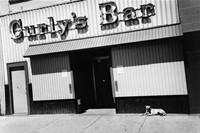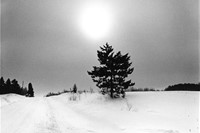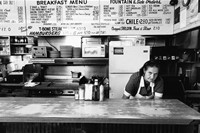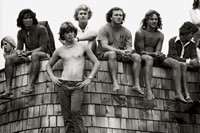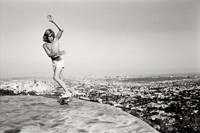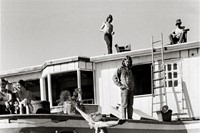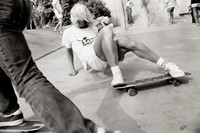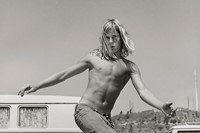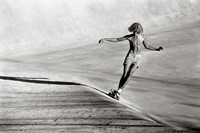This month’s selection of must-have photography books includes Purienne’s sensual publication set in a secluded Los Angeles home, Alexandra Leese’s zine dedicated to the power of the moon, and Camille Vivier’s ode to her muse and bodybuilder Sophie
Jeux de Peau by Henrik Purienne, published by IDEA
The newly published Jeux de Peau by Purienne is a sensual portrait of the South African photographer’s life and home in Los Angeles. Featuring shots of his friends and interiors from his home – which Purienne says “elegantly combines the worlds of 1930s French country estate with 1980s mirror-wall porn set. It has a great flow from the entrance through the living room onto a vast terrace with an expansive view of the city across the pool” – Jeux de Peau centres on the idea that design and interiors can transform your mood and creativity. At Jeux de Peau – also the name of his California house – Purienne considers his living environment as carefully as he does his photography. “I am firstly a documentary photographer. I capture life: the subjects and objects within my environment and interior space as a metaphor. I love documenting real moments with friends,” he says.
Beulah Land by Paige Powell, published by Dashwood
In a set of books published by Dashwood and brought to life by Gucci, the extensive and fascinating archive of Paige Powell is celebrated anew. The set’s four publications – Beulah Land, Animals, Artists Eating and Paige Powell – reveal many photographs that have never previously been published, and offer a glimpse into Powell’s life in 1980s New York City. What’s more, last week at Dover Street Market London, Powell unveiled a reconstruction of her 1984 installation Beulah Land: a room with thousands of photographs pasted all over its walls which, for this iteration of the project, have been chosen from her archive and are connected with London in some way.
Lost and Found by Bruce Gilden, published by Thames & Hudson
Lost and Found is a new book featuring photographs taken by “Bruce Gilden before he really was Bruce Gilden”, in New York in the 1970s. The images in Lost and Found were rediscovered by Gilden last year when he was moving out of his Manhattan home, and 40 years later are offering a glimpse into the striking early work of the street photographer, during a time when he was developing his practice. The photographs also highlight how New York has changed in the intervening years. “That’s the kind of thing that’s missing in New York now,” Gilden told AnOther of his photograph of two laughing twins stood outside a peep show, “this kind of crass, vulgar window that adds so much to the pictures – because the street itself takes on a life of its own, and that’s what you don’t have today. Today it has a life, but it’s totally generic.”
Before Easter After by Patti Smith and Lynn Goldsmith, published by Taschen
“We wanted the book to be a sacred object – sacred for people who really love Patti,” photographer Lynn Goldsmith told AnOther earlier this month of her new book, Before Easter After, which she has co-authored with Patti Smith. The beautiful book documents a particular period of Smith’s life, from when she fell off a stage while performing in Tampa, Florida, in 1977 – a moment that Goldsmith captured, and is shown in the book – and through her recovery, which led to the production of The Patti Smith Group’s album Easter. Full of original poetry and lyrics by Smith, Before Easter After captures the magic of the musician during these fabled years, and is also testament to the enduring friendship shared by its two authors.
Sophie by Camille Vivier, published by Art Paper Editions
Camille Vivier’s new book, Sophie, documents her longstanding photographic relationship with the titular Sophie, a bodybuilder who has become a muse for the French image-maker. “When I met Sophie, I was not only fascinated by her powerful, sculptural body but I was also drawn to her face which is sweet, feminine and tender,” Vivier told AnOther earlier this year, when the series was being exhibited in Berlin. “I felt that Sophie had a lot to say through her bodybuilding practice – it is, or at the time was, a reconstruction of herself in both an allegorical and a physical sense.” Now published as a book by Art Paper Editions, Sophie brings together portraits taken over the years that the model and photographer have known each other, with Sophie taking on various different guises in a celebration of the softness and strength of femininity.
Yumi and the Moon by Alexandra Leese, published by Antenne Books
The starting point for Alexandra Leese’s new zine, Yumi and the Moon, was the ancient Japanese folk story The Tale of the Bamboo Cutter and its protagonist, the mysterious princess Kaguya-hime. Leese was introduced to the story by Yumi Carter, who is captured in the zine in the spirit of Kaguya-hime, alongside Leese’s captivating photographs of the moon. “Kaguya-hime was a strong and independent girl, full of mystery, divinity and beauty,” says Leese, “and Yumi is similar so I wanted to translate this through the pictures.” Taken at a time when Carter herself was experiencing “a personal rebirth”, Yumi and the Moon is an ode to the beauty, mystery and power of the moon.
Re-visions by Marcia Resnick, published by Editions Patrick Frey
Originally published in 1978, a second edition of Re-visions by Marcia Resnick is out now, over 40 years later. Resnick began creating the book after she was involved in a car accident in 1975, an incident that led her to reflect on her life until the near-fatal crash. The resulting book, Re-visions, comprises staged photographs of a female adolescence, and falls somewhere between fiction and reality. Each photograph is captioned with a wry, ironic line written by Resnick, and, as in the original edition, Re-visions comes with a series of ‘endorsements’ – not all strictly positive – from the artist’s peers, like Andy Warhol and Allen Ginsberg: “Bad,” writes Warhol. (“They weren’t putting me down, we were all laughing together,” Resnick told The British Journal of Photography.) For the second edition, a line from Lydia Lunch is added to the mix: “A sweet twist which whispers in mysterious tones predicting the delicious perversion of a budding adolescence.”
Out of the Shadows by Marcus Leatherdale, published by ACC Art Books
Leigh Bowery, Cookie Mueller, Andy Warhol, and Divine were all photographed by Marcus Leatherdale in New York in the 1970s and 80s. “It was the first time that I totally felt in the right place at the right time, where I wanted to be,” the photographer told AnOther. “I was determined to make my mark in New York City.” Leatherdale started taking portraits of the New York’s underground icons, capturing the pulse of the city and documenting some of its most storied characters. In one of his series, Hidden Figures – which features in his new book about this era, Out of the Shadows – Leatherdale asked his sitters to cover their faces, allowing for their outfits and personalities to tell their stories in the photograph.
Highway 61 by Jessica Lange, published by Powerhouse Books
The storied road of Highway 61 has always had a personal significance for actor Jessica Lange, who caught a Greyhound bus from her hometown of Cloquet, Minnesota, and travelled down the route, which runs from the Canadian border down to New Orleans, at the age of 18. In her poignant new monograph, Highway 61, Lange presents a collection of photographs taken along the length of the road, documenting its characters, landscapes, life and loneliness. “I felt that loneliness as a child and I feel it even more acutely now,” Lange writes in the book. “Long stretches of 61 are empty, forlorn, as if in mourning for what has gone missing – the hometowns, the neighbourhoods, family farms, factories, and mills... Some [people] remain, perhaps yearning for that more vibrant past but reluctant to abandon the place they call home.”
Silver. Skate. Seventies by Hugh Holland, published by Chronicle
Hugh Holland’s Silver. Skate. Seventies is a never-before-seen document of California’s 1970s skateboard revolution. Holland was just starting out in photography when he noticed the skaters and their new sport in 1975, and when Los Angeles was struck with a drought in 1976, the teens and their boards took advantage of drained swimming pools and the scorching California sun. “I was driving through Laurel Canyon past a drainage ditch they called the ‘Mini Bowl’,” Holland remembers, speaking to Another Man. “Out of the corner of my eye, I noticed them bobbing up past street level, going up and coming down, over and over again. They were conquering new frontiers. I stopped, parked my car, and went in. They welcomed me because I had a camera and a car!”
